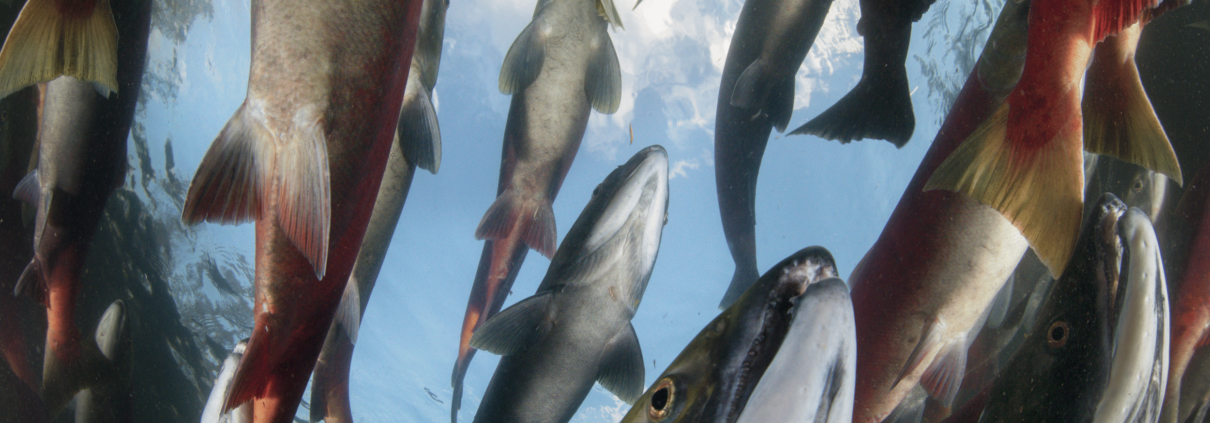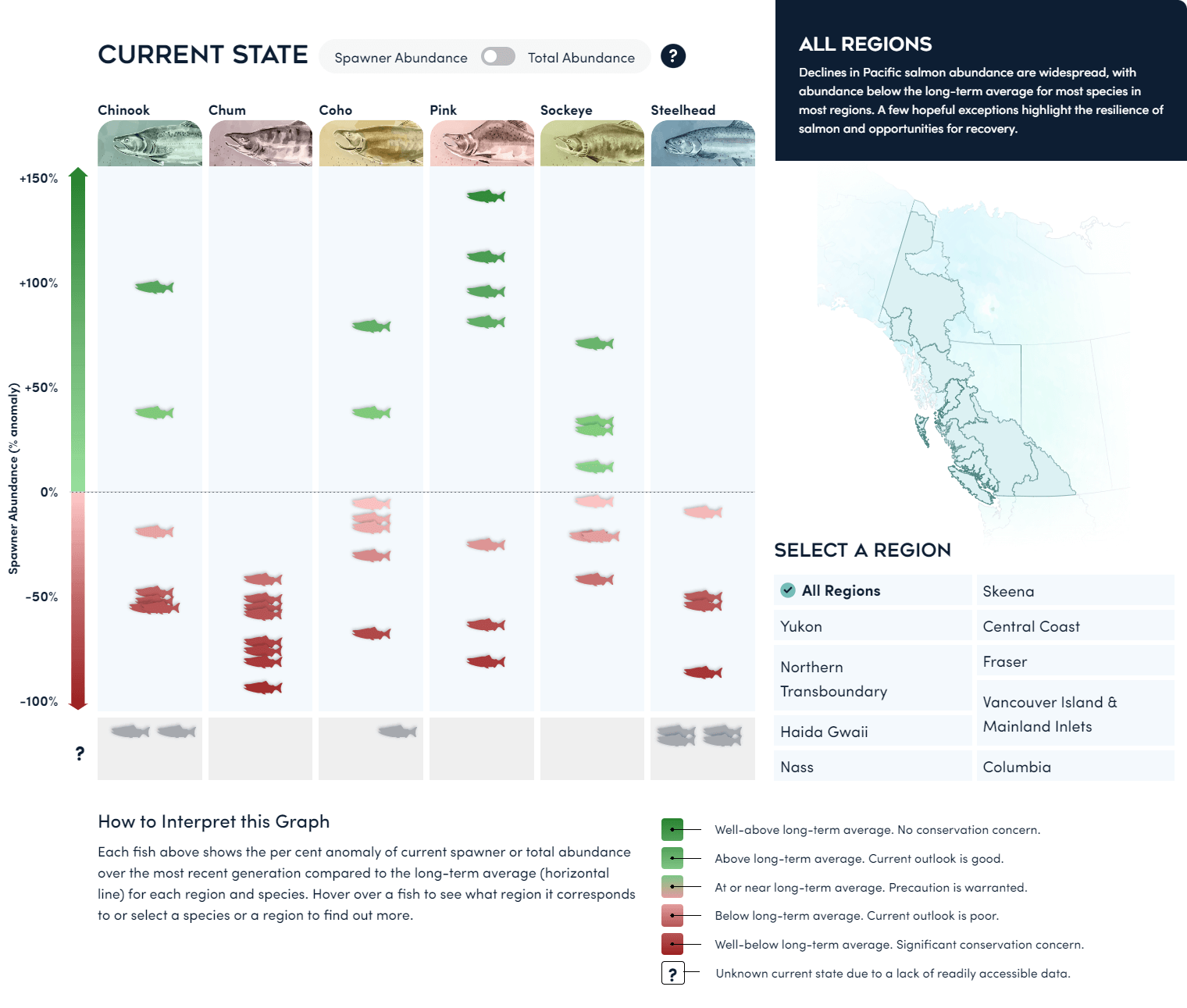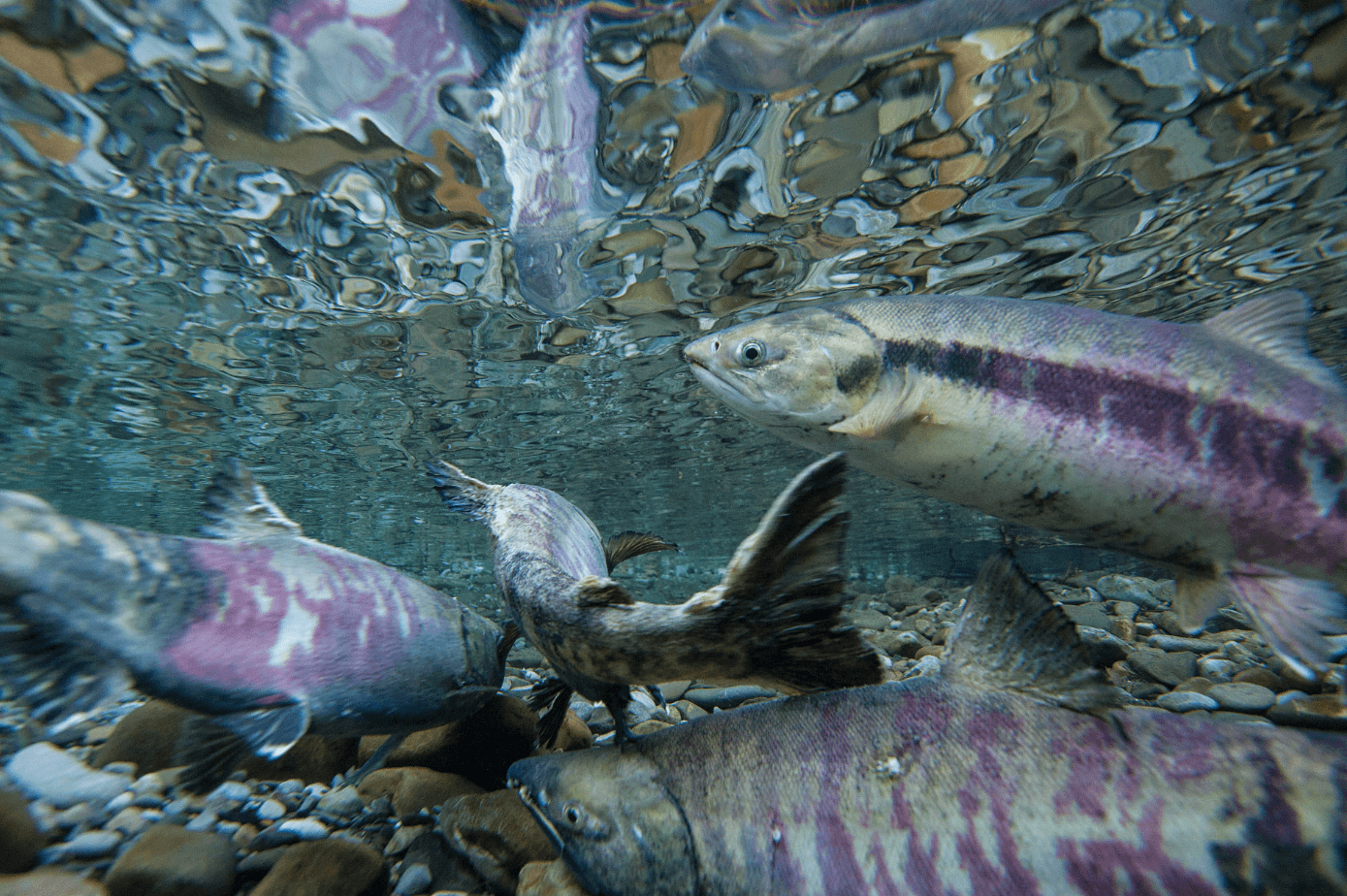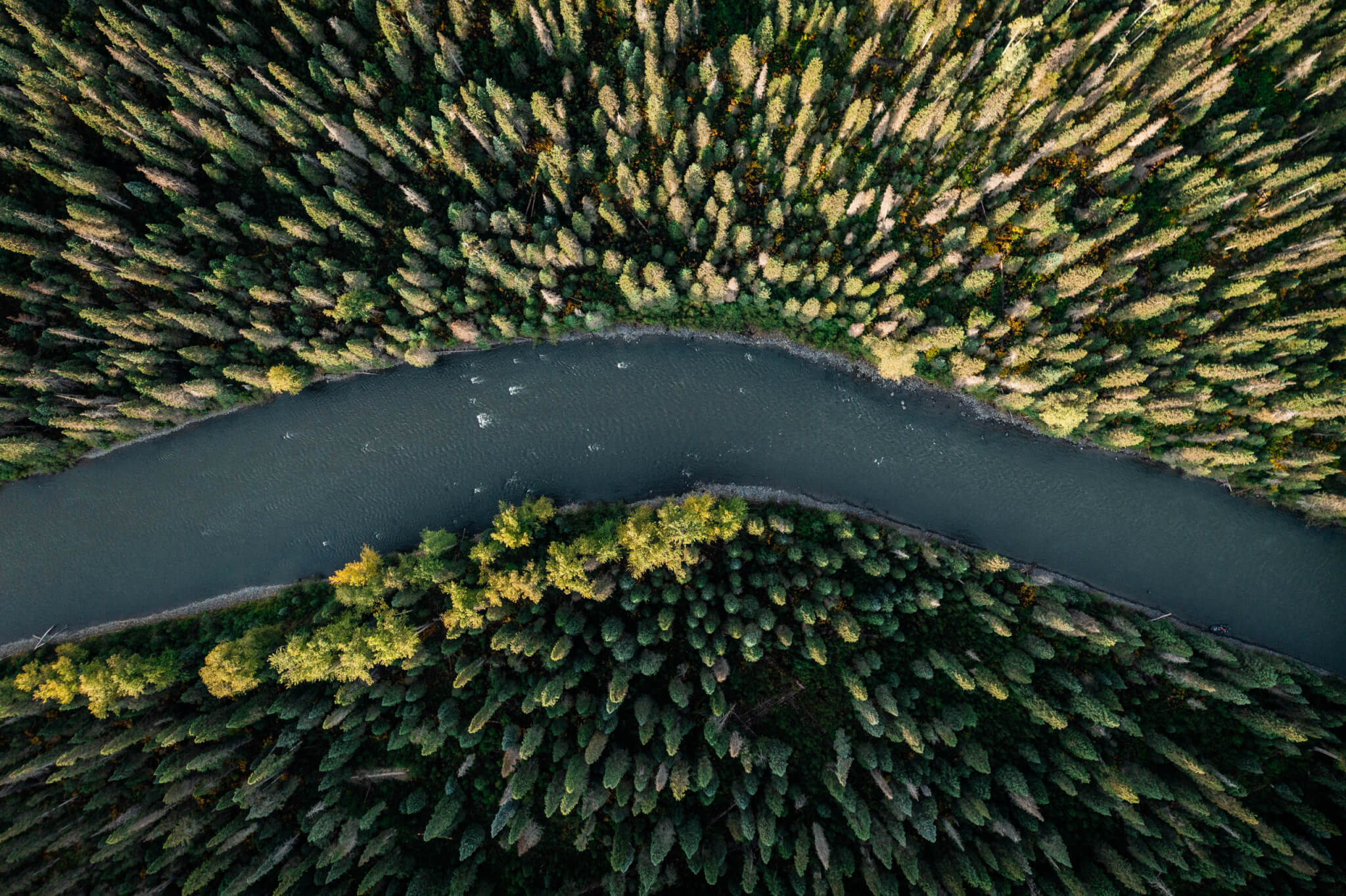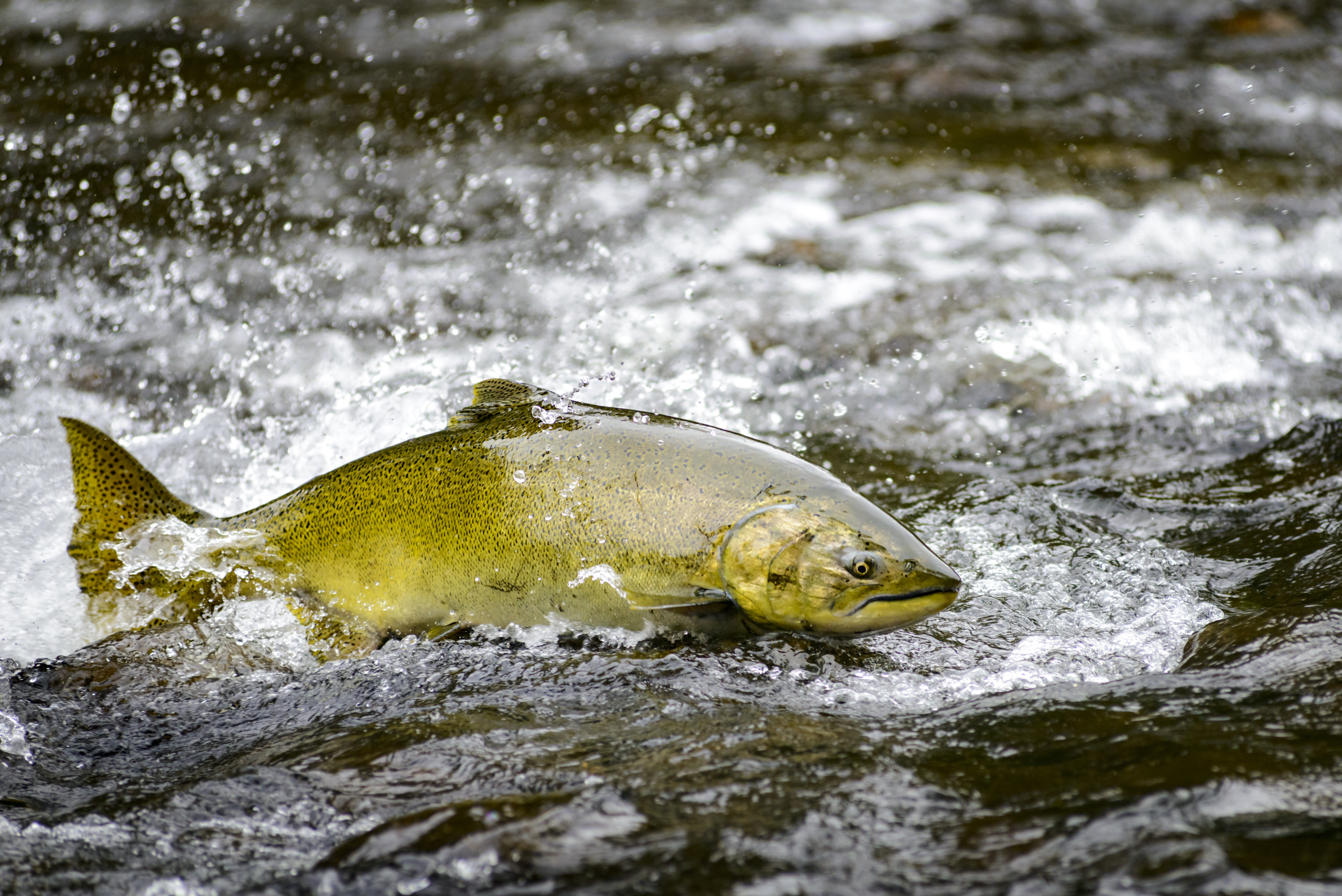New State of Salmon Report highlights widespread declines for most salmon in B.C.
Sept. 19, 2024
Vancouver, B.C. – Pacific salmon are in decline across British Columbia and the Yukon, according to a new report from the Pacific Salmon Foundation (PSF). More than 70 per cent of salmon are below their long-term average of the 41 combinations of regions and species assessed.
The State of Salmon Report – the first to assess the current state of each species of Pacific salmon and steelhead across nine regions in Canada – reveals that salmon are declining in most regions. Further, of all species, chum salmon and steelhead are struggling the most. Both are below their long-term average in all regions.
The report also shows signs of hope. Coho salmon from the Fraser River and Chinook from Vancouver Island and Mainland Inlets are above their long-term average.
“This State of Salmon Report gives us the clearest picture yet of how Pacific salmon are faring across Canada — and it’s evident they need our help,” says Michael Meneer, President and CEO, Pacific Salmon Foundation.
“This report is the first to tell us where salmon are thriving, where they are threatened, and where they need our support. With access to these data-driven insights at our fingertips, we can take decisive action to protect salmon for generations to come.”
Notable highlights
The State of Salmon report indicates that chum salmon have experienced the most precipitous declines of any species. They are below the long-term average everywhere. Chum salmon range from 39 per cent below the long-term average in the Nass River region to 89 per cent below in the Skeena region. These declines mirror chum trends across the North Pacific, including Oregon, Washington, and Japan.
Similarly, steelhead are also below the long-term average in all regions. In some areas, such as the Columbia, only a few fish have been recorded in recent years. Many populations face an imminent risk of extinction, including in the Fraser where two populations are listed as endangered by the Committee on the Status of Endangered Wildlife in Canada.
The report is organized into nine regions, allowing users to view the state of salmon by location.
The results indicate that northern areas – including the Yukon, Central Coast, Haida Gwaii, and Northern Transboundary watersheds – have experienced widespread salmon declines.
“Salmon are expected to shift north as the climate changes,” says Katrina Connors, Senior Director, Pacific Salmon Foundation. “There’s a perception that northern areas will provide refuge for salmon as climate change pushes salmon to their limits in their southern range. However, the poor state of salmon and the rapid pace of climate change in these northern regions suggest that these salmon actually need more of our help.”
The northernmost regions of B.C. and the Yukon are warming faster than the rest of Canada, dramatically altering freshwater habitats and challenging salmon survival.
Signs of recovery
The State of Salmon report also shows signs of hope for the future of Pacific salmon. Some species in southern regions are doing well.
For example, Fraser River coho are above average for the first time in decades, with levels of fish returning to spawn not seen since before the crash in the 1990s.
Similarly, Chinook on Vancouver Island and Mainland Inlets are well above average. Many Chinook populations are doing exceptionally well in this region, including in the Cowichan River, where salmon have rebounded in record numbers after nearing extinction only 15 years ago.
“Overall, the state of salmon in B.C. and the Yukon should raise our collective alarm. Most species in most regions are declining. However, there is hope. Some species are recovering and showing remarkable resilience in the face of increasing threats like climate change,” says Connors.
“We look forward to working with Indigenous partners, communities, and crown governments to activate insights from the State of Salmon Report and identify solutions that will improve the state of salmon and accelerate their recovery. We must protect and maintain the diversity of salmon and their habitats to give them the best chance to adapt and thrive in an ever-changing world.”
Unfortunately, a lack of data made it difficult for PSF to fully assess the state of salmon, leading to gaps in our understanding of how salmon are doing in these regions. These gaps underscore the need to improve the salmon data pipeline, from data collection, compilation, and storage to sharing.
PSF’s State of Salmon resource can be accessed online (stateofsalmon.ca) as an interactive website. It is also available as a PDF document.
PSF thanks the Province of B.C. for funding that made the State of Salmon Report possible. The report is based on detailed data from the Pacific Salmon Explorer (www.salmonexplorer.ca), which offers finer-scale information on salmon populations and their freshwater habitats.
MEDIA INQUIRIES: Please contact Braela Kwan at bkwan@psf.ca or (604) 664-7664 ext. 1025

